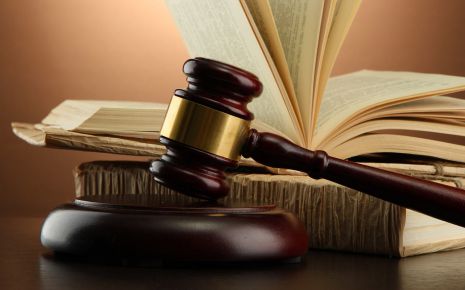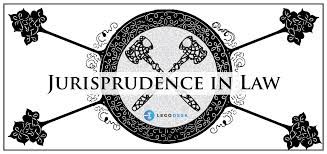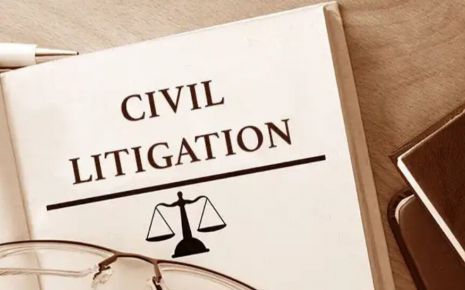Doctrine of Stare Decisis
Cases with similar scenarios and facts must be approached in the same way, as
required by Stare Decisis. This legal doctrine obligates courts to follow
historical cases while making a ruling on a similar case. Previous decisions set
legal precedents that bind courts to follow them, in a nutshell.
Key Points:
Stare Decisis is a legal doctrine that obliges courts to follow historical cases in deciding a similar case.
Similar jurisdictions must follow the precedents of other like cases, according to the principle of stare decisis.
The Supreme Court is the highest court in the land; therefore, all states rely on Supreme Court precedent.
In legal terms, Stare Decisis is a principle that means "let's stick with what we decided before." When a court makes a decision on a specific legal issue, that decision becomes a kind of rule that should be followed in similar cases. Stare Decisis is the policy of the court to stand by precedent. The phrase 'Stare Decisis' is shortened from the Latin phrase 'stare decisis et non quieta movere,' which means 'to stand by decisions and not disturb settled matters.'
Characteristics of Stare Decisis
The main characteristics of Stare Decisis are as follows:
Concept of Stare Decisis
Decisis stare is the legal principle that courts should, where possible, adhere to precedent and not disturb settled matters. This means that once a court has decided a legal issue, future cases involving the same issue should be decided consistently. As a result, stare decisis promotes predictability in the law and enhances stability and certainty for parties involved in legal disputes. However, courts may depart from precedent if the prior decision is clearly wrong or if circumstances have changed significantly since the prior decision was made. Despite these exceptions, stare decisis is an important foundation of the American legal system.
When legal points in subsequent cases arise that are similar, adhering to previous judicial decisions is the belief stated in the doctrine of precedent.
Promoting citizens' confidence in planning their economic and social transactions is one of the main objectives served by the idea of Stare Decisis. This doctrine is responsible for three objectives, of which this is the first.
Individuals can have confidence that they're following the law with this doctrine. This doctrine also encourages private settlement as the court uses it in decisions about disputes.
Every time the judge or bench handling a case changes, there is a risk of newly-induced litigation. However, by reducing the necessity to re-examine cases that have already been settled, this risk is minimized. This effectively supports the idea of discouraging any future litigation that might arise due to changes in court personnel.
The power of judges is limited and regulated by the vital doctrine of judicial restraint, which prioritizes maintaining orderly and predictable decision-making processes. Such practices promote trust in the judicial system among the public.
Throughout the following text, rearrange and intermittently eliminate words to convey similar information but in a fresher way. Avoid using words that may sound excessively unusual while still retaining clarity.
Explanation 1
The court ruled in favour of the rightful tree owner after the neighbour irresponsibly took an unannounced action to chop it down, leading to a lawsuit for damages. Ultimately, the neighbour was deemed responsible for the necessary reparations.
A new case poses a familiar situation, echoing a legal precedent where a neighbour was sued for cutting down a tree. To maintain consistency with stare decisis, the court's routine response would be to side with the owner of the tree that has fallen and reference the earlier case as evidence. The court's primary goal is to ensure that the law is consistently applied to similar scenarios and fairness prevails.
Explanation 2
The "separate but equal" principle was established by Plessy v. Ferguson, a significant case in 1896, by implementing the legal concept of "stare decisis" which requires adherence to previous rulings. This ruling essentially means that state laws enforcing segregation in public areas are lawful as long as both blacks and whites are given the same type of facilities.
For quite some time, legal cases in the US regularly supported the notion of segregating schools, public places, and transportation based on race. They did so by implementing a legal doctrine that served as a standard for other courts and areas to abide by. Hence, this pattern was established as the status quo.
Societal norms, ethics and politics, they all play a part in the world of law. The principle of "stare decisis" is not an unmovable fixture. Occasionally, it can be overturned and invalidated as time progresses. In 1954, the case of Brown v. Board of Education showcased this notion by abolishing the once upheld ruling of Plessy v. Ferguson, which enforced the controversial notion of "separate but equal." This judgment solidified the fact that "separate but equal" was unconstitutional and did not genuinely uphold equal rights. Brown v. Board of Education acts as an excellent instance of how the law can adapt to accommodate diverse societal values and beliefs.
Conclusion
Simply put, Stare Decisis is the practice of using past rulings as guidance in current legal matters. However, if those previous rulings no longer align with fairness or present circumstances, they can be modified to ensure justice and coherence in today's legal landscape. Ultimately, it's about maintaining a balance between fairness and consistency within the realm of law. The principle of Stare Decisis, which is a Latin term, translates to "to stand by things decided", governs how courts make legal decisions. When a court is presented with a legal argument that has been previously ruled upon by itself or another court, it generally follows the precedent set in that earlier decision.
Reference:
Written By: Md.Imran Wahab, IPS, IGP, Provisioning, West Bengal
Email: [email protected], Ph no: 9836576565
Key Points:
Stare Decisis is a legal doctrine that obliges courts to follow historical cases in deciding a similar case.
Similar jurisdictions must follow the precedents of other like cases, according to the principle of stare decisis.
The Supreme Court is the highest court in the land; therefore, all states rely on Supreme Court precedent.
In legal terms, Stare Decisis is a principle that means "let's stick with what we decided before." When a court makes a decision on a specific legal issue, that decision becomes a kind of rule that should be followed in similar cases. Stare Decisis is the policy of the court to stand by precedent. The phrase 'Stare Decisis' is shortened from the Latin phrase 'stare decisis et non quieta movere,' which means 'to stand by decisions and not disturb settled matters.'
Characteristics of Stare Decisis
The main characteristics of Stare Decisis are as follows:
- Binding Precedent: Think of a rule in a game that everyone must follow. When a court makes a decision, it's like creating a rule for that specific situation. Other courts, particularly lower ones, should then follow that rule in similar situations.
- Hierarchy of Rules: Legal system hierarchy is often compared to a tower with various levels. At the top, the highest court establishes the most significant rules that lower courts must adhere to. Appellate courts, positioned in the middle, create rules that trial courts, located at the bottom level, are obligated to follow.
- Making Exceptions: There are instances where the current circumstances differ from those when a particular rule was established. In such cases, a court may conclude that the situation is distinct from previous rulings and therefore not bound by the old rule.
- Updating the Rules: In cases where a court deems an outdated rule to be fundamentally flawed, they have the authority to declare, "We will no longer adhere to this rule." This is akin to modifying the rules of a game that were deemed nonsensical.
- Ensuring Fairness: Maintaining fairness and predictability within the legal system is crucial, and Stare Decisis is the key. Individuals gain clarity when cases are handled consistently, which informs them of what to expect from the law.
- Evolution with the Times: As the world around us changes, so too must the laws that govern it. The evolution of society demands a corresponding evolution in the legal landscape. With the power to review antiquated regulations, the courts can ensure that the rules reflect current realities. Only by updating the legal system can it remain relevant and sensible in today's world.
Concept of Stare Decisis
Decisis stare is the legal principle that courts should, where possible, adhere to precedent and not disturb settled matters. This means that once a court has decided a legal issue, future cases involving the same issue should be decided consistently. As a result, stare decisis promotes predictability in the law and enhances stability and certainty for parties involved in legal disputes. However, courts may depart from precedent if the prior decision is clearly wrong or if circumstances have changed significantly since the prior decision was made. Despite these exceptions, stare decisis is an important foundation of the American legal system.
When legal points in subsequent cases arise that are similar, adhering to previous judicial decisions is the belief stated in the doctrine of precedent.
Promoting citizens' confidence in planning their economic and social transactions is one of the main objectives served by the idea of Stare Decisis. This doctrine is responsible for three objectives, of which this is the first.
Individuals can have confidence that they're following the law with this doctrine. This doctrine also encourages private settlement as the court uses it in decisions about disputes.
Every time the judge or bench handling a case changes, there is a risk of newly-induced litigation. However, by reducing the necessity to re-examine cases that have already been settled, this risk is minimized. This effectively supports the idea of discouraging any future litigation that might arise due to changes in court personnel.
The power of judges is limited and regulated by the vital doctrine of judicial restraint, which prioritizes maintaining orderly and predictable decision-making processes. Such practices promote trust in the judicial system among the public.
Throughout the following text, rearrange and intermittently eliminate words to convey similar information but in a fresher way. Avoid using words that may sound excessively unusual while still retaining clarity.
Explanation 1
The court ruled in favour of the rightful tree owner after the neighbour irresponsibly took an unannounced action to chop it down, leading to a lawsuit for damages. Ultimately, the neighbour was deemed responsible for the necessary reparations.
A new case poses a familiar situation, echoing a legal precedent where a neighbour was sued for cutting down a tree. To maintain consistency with stare decisis, the court's routine response would be to side with the owner of the tree that has fallen and reference the earlier case as evidence. The court's primary goal is to ensure that the law is consistently applied to similar scenarios and fairness prevails.
Explanation 2
The "separate but equal" principle was established by Plessy v. Ferguson, a significant case in 1896, by implementing the legal concept of "stare decisis" which requires adherence to previous rulings. This ruling essentially means that state laws enforcing segregation in public areas are lawful as long as both blacks and whites are given the same type of facilities.
For quite some time, legal cases in the US regularly supported the notion of segregating schools, public places, and transportation based on race. They did so by implementing a legal doctrine that served as a standard for other courts and areas to abide by. Hence, this pattern was established as the status quo.
Societal norms, ethics and politics, they all play a part in the world of law. The principle of "stare decisis" is not an unmovable fixture. Occasionally, it can be overturned and invalidated as time progresses. In 1954, the case of Brown v. Board of Education showcased this notion by abolishing the once upheld ruling of Plessy v. Ferguson, which enforced the controversial notion of "separate but equal." This judgment solidified the fact that "separate but equal" was unconstitutional and did not genuinely uphold equal rights. Brown v. Board of Education acts as an excellent instance of how the law can adapt to accommodate diverse societal values and beliefs.
Conclusion
Simply put, Stare Decisis is the practice of using past rulings as guidance in current legal matters. However, if those previous rulings no longer align with fairness or present circumstances, they can be modified to ensure justice and coherence in today's legal landscape. Ultimately, it's about maintaining a balance between fairness and consistency within the realm of law. The principle of Stare Decisis, which is a Latin term, translates to "to stand by things decided", governs how courts make legal decisions. When a court is presented with a legal argument that has been previously ruled upon by itself or another court, it generally follows the precedent set in that earlier decision.
Reference:
- Interpretation of Statutes, P. Krishnaswamy, Asia Law House
Written By: Md.Imran Wahab, IPS, IGP, Provisioning, West Bengal
Email: [email protected], Ph no: 9836576565
Law Article in India
Legal Question & Answers
Lawyers in India - Search By City
LawArticles
How To File For Mutual Divorce In Delhi

How To File For Mutual Divorce In Delhi Mutual Consent Divorce is the Simplest Way to Obtain a D...
Increased Age For Girls Marriage

It is hoped that the Prohibition of Child Marriage (Amendment) Bill, 2021, which intends to inc...
Facade of Social Media

One may very easily get absorbed in the lives of others as one scrolls through a Facebook news ...
Section 482 CrPc - Quashing Of FIR: Guid...

The Inherent power under Section 482 in The Code Of Criminal Procedure, 1973 (37th Chapter of t...
The Uniform Civil Code (UCC) in India: A...

The Uniform Civil Code (UCC) is a concept that proposes the unification of personal laws across...
Role Of Artificial Intelligence In Legal...

Artificial intelligence (AI) is revolutionizing various sectors of the economy, and the legal i...








Please Drop Your Comments